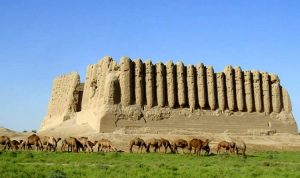APRIMITIVEPLACE – In the realm of ancient Egyptian culture, the anticipation of pregnancy held profound significance in a woman’s life. Regarded as a symbol of blessing and joy, the prospect of motherhood sparked eagerness among ancient Egyptian women, compelling them to seek methods to determine their pregnancy status.
Among the diverse array of techniques employed by ancient Egyptian women, one notable method involved soaking cotton in a woman’s urine.
The premise underlying this method was founded on the belief that a pregnant woman’s urine contained hormones, specifically human chorionic gonadotropin (hCG), which promotes cell growth. This hCG hormone becomes detectable in the body following conception.
The Ebers Papyrus, an ancient medical manuscript dating back to around 1550 BC, serves as a historical record of this unique pregnancy prediction method.
The instructions within the papyrus outline the process as follows: “Take a handful of cotton. Soak the cotton in the woman’s urine. Plant the cotton in the ground. If the cotton grows within 7 days, the woman is pregnant.”
Despite its simplicity and rooted belief, the accuracy of this method was not guaranteed. Nevertheless, it gained popularity among ancient Egyptians as a means to unveil the mysteries of pregnancy.
In addition to the cotton method, ancient Egyptian women explored various other techniques for predicting pregnancy.
These included assessing the shape of a woman’s stomach—enlargement being considered a potential sign of pregnancy—and observing changes in skin color, such as paleness or yellowness.
Some also conducted tests utilizing natural ingredients like honey or wheat. However, it’s crucial to note that no single method could ensure a 100% accurate prediction of pregnancy.
The uniqueness of the ancient Egyptian pregnancy prediction methods lies in their simplicity, reliance on belief, and the inherent lack of absolute accuracy.
The cotton method, in particular, stands out for its uncomplicated nature, as it merely requires cotton, women’s urine, and soil.
Rooted in the belief in the growth-inducing properties of hormones present in a pregnant woman’s urine, the method reflects the cultural and medical understanding of ancient Egyptian society.
First, its simplicity is evident, requiring only cotton, women’s urine, and soil. Second, the method is deeply rooted in belief, hinging on the conviction that the hormonal composition of a pregnant woman’s urine could stimulate cotton growth. Lastly, the method’s lack of absolute accuracy did not diminish its popularity in ancient Egyptian society.
In conclusion, the method of pregnancy prediction with cotton, while not infallible, remains a captivating aspect of ancient Egyptian culture and medical history.
It exemplifies the blend of simplicity and belief that characterized the practices of that era, providing a glimpse into the unique ways in which ancient civilizations sought to unravel the mysteries of life and fertility.








Magnificent beat I would like to apprentice while you amend your site how can i subscribe for a blog web site The account helped me a acceptable deal I had been a little bit acquainted of this your broadcast offered bright clear idea